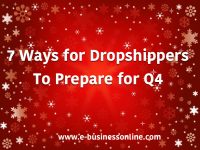New Policies for Amazon’s OTC Medicine and Supplements
Hello Amazon Sellers, In yet another sweeping change, Amazon announces yet another regulation and imposition on their Sellers; this time, in the Health & Personal Care category. If you are one of thousands of Sellers who create supplements or over-the-counter medicines, this will impact you in a significant way. Here’s the official notification from Amazon: […]





